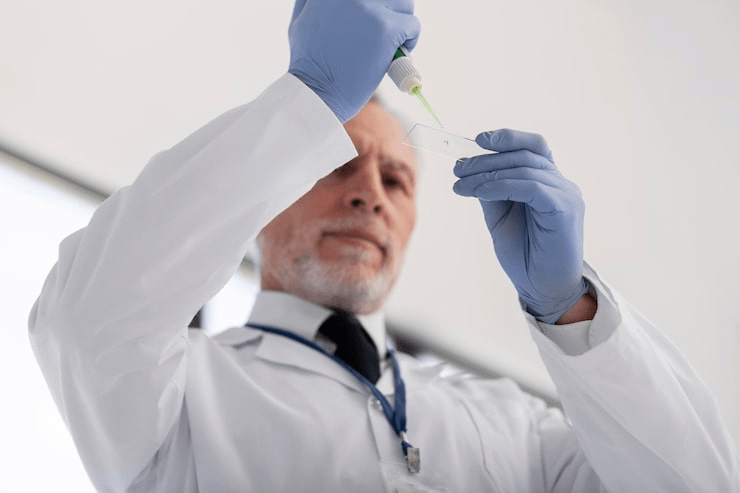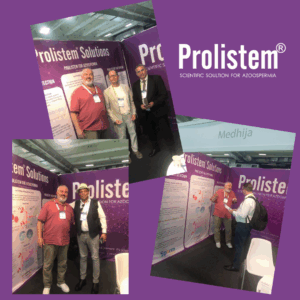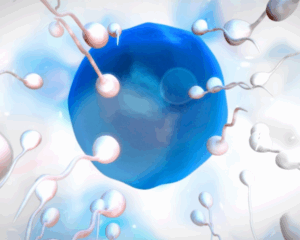
Prolistem for Non-Obstructive Azoospermia: A Comprehensive Guide
Prolistem for non obstructive azoospermia, Non-obstructive azoospermia (NOA)

Stem cell therapy for azoospermia is transforming the treatment landscape for men suffering from infertility. Azoospermia is a condition where no measurable sperm is found in a man’s semen, which significantly affects fertility. Traditionally, treatment options were limited, leaving many men with little hope for biological fatherhood. However, advances in medical science are changing that narrative. Stem cell therapy is emerging as a revolutionary treatment, offering new possibilities for men struggling with infertility.
In this comprehensive guide, we’ll explore how stem cell therapy works, its potential in treating azoospermia, the latest research, success rates, costs, and more. Whether you’re a patient or a healthcare provider, this article provides in-depth insights into this promising treatment.
Azoospermia affects approximately 1% of the male population and is responsible for around 10-15% of male infertility cases. There are two main types:
While surgical procedures can sometimes address obstructive cases, non-obstructive azoospermia presents a greater challenge.
Conventional treatments include:
However, these options have variable success rates and are often invasive or costly. This is where stem cell therapy for azoospermia offers a potentially less invasive and more effective alternative.
Stem cells are undifferentiated cells with the potential to develop into different cell types in the body. In the context of azoospermia, stem cells can potentially regenerate sperm-producing cells in the testes, thereby restoring fertility.
Two primary types of stem cells are used in research and therapy:
The process typically involves several stages:
Some clinical approaches may also involve gene editing or supportive hormone treatments to improve results.
Several studies have demonstrated encouraging results:
Leading institutes in countries like India, China, and the USA are conducting ongoing clinical trials to refine techniques and ensure safety.
With continued research, stem cell therapy may become a first-line treatment for azoospermia, particularly non-obstructive types.
Despite its potential, there are still limitations:
Patients should consult with a fertility specialist and understand all risks before opting for this treatment.
Costs can vary significantly by region and clinic, ranging from $5,000 to $20,000 or more. Factors that influence the cost include:
While it’s currently more expensive than traditional treatments, the long-term benefits may outweigh initial costs for many patients.
While stem cell therapay for azoospermia offers a cutting-edge solution, supporting fertility through medication can still be valuable. Some commonly recommended azoospermia tablets include:
Always consult a urologist or endocrinologist before starting any medication.
Currently, stem cell therapy for azoospermia is considered experimental and not FDA-approved. However, ongoing clinical trials aim to change this in the future.
Stem cell therapy shows the most promise for non-obstructive azoospermia. Obstructive cases may still require surgical solutions.
Results vary, but some patients may notice improvements in hormone levels and sperm presence within 6 to 12 months.
The stem cell collection and injection process is generally well-tolerated, often performed under local anesthesia.
Natural methods such as diet, exercise, supplements, and stress management can improve fertility but may not resolve azoospermia on their own.
Stem cell therapay for azoospermia is reshaping the landscape of male infertility treatment. While still in the experimental phase, it holds immense promise for restoring fertility in men previously thought to be infertile.
Combining cutting-edge science with personalized care, this therapy may soon become mainstream. If you’re considering this option, consult with a qualified fertility expert to determine your suitability and understand the full scope of the treatment.
Stay informed, explore all options, and take proactive steps toward your reproductive health.

Prolistem for non obstructive azoospermia, Non-obstructive azoospermia (NOA)

Introduction Male infertility, especially caused by azoospermia, affects

We are proud to have participated in the

Introduction: A New Hope in Male Infertility Treatment
PROLISTEM® is a Patented Formula
Copyright © 2025 Prolistem®